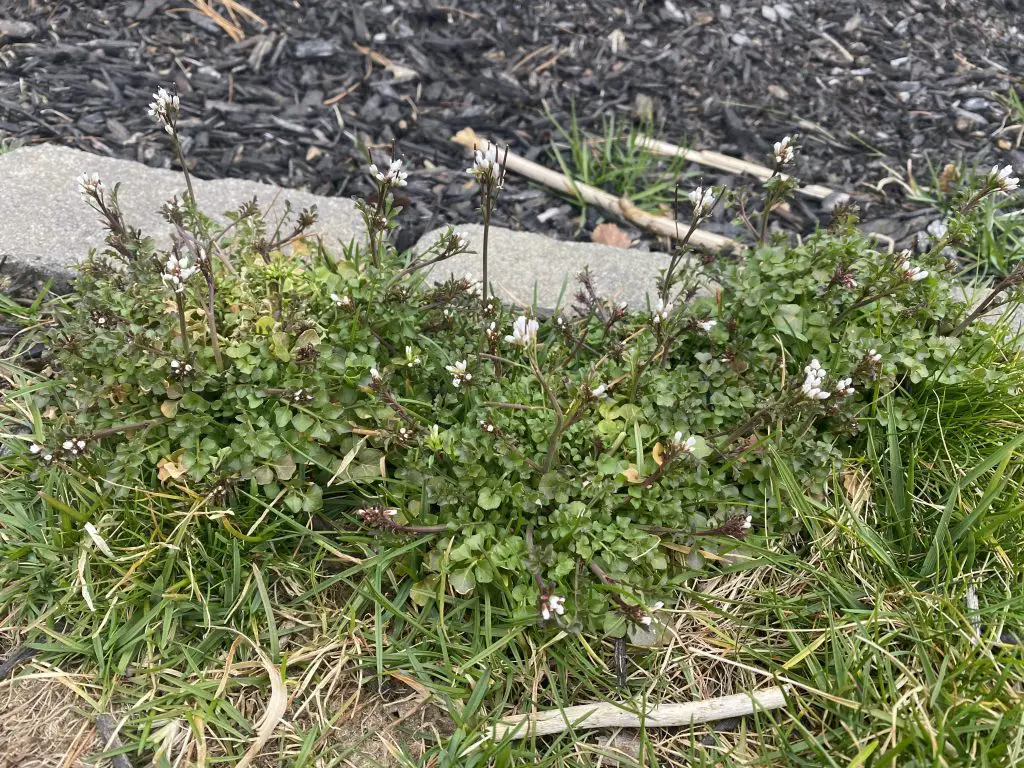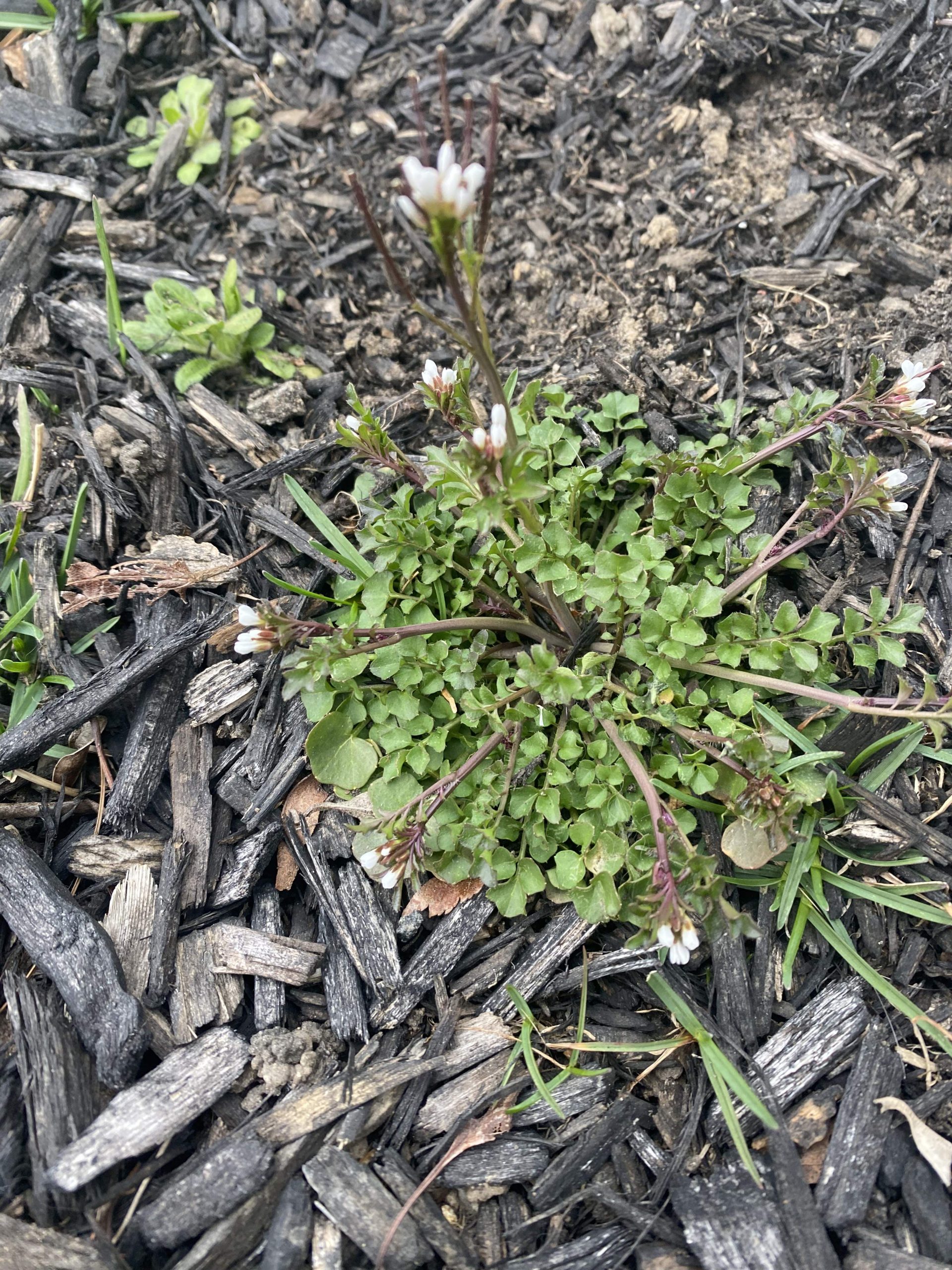Despite the chilly outdoor temps, spring is here. One surefire way to tell is the sight of weeds with small white flowers popping up in your lawn and landscape. I’ve seen several posts about this weed in forums and social media pages. I’ve even received a couple of emails.
The weed to watch this spring is hairy bittercress.
Table of Contents
Identifying Hairy Bittercress
Hairy bittercress Cardamine hirsuta is an annual winter weed. It is challenging to treat as the plant emerges early in the season, and can cause havoc to your lawn from early spring through late summer.
This plant, characterized by tiny white flowers near the end of its flower stems, turns into seed pods. These seedpods produce seeds that can spread quickly throughout the soil surface in your lawn, starting the life cycle all over again with young seedlings when the weather warms after winter.
Look for a cluster of leaves at the base of the plant. These leaves are divided into smaller leaflets, like a fern, with rounded edges. You might also see one or more stems growing taller with leaves with longer, narrower leaflets.
Here are some pictures from my lawn and landscape this early spring.



Hairy Bittercress Lifecycle
Hairy bittercress seeds germinate in the fall, overwinter, and emerge in the early spring.
This plant will die off as the weather becomes hotter, shedding its seeds, only to repeat its lifecycle all over again.
Example of the hairy bittercress lifecycle compared to another common annual weed, crabgrass:
| Weed | Germination | Emerging/Growing | Die-off |
| Bittercress | Fall-Winter | Winter through spring | Annually, late spring |
| Crabgrass | Spring | Spring through summer | Annually, late summer |
Controlling and Eliminating Hairy Bittercress
The good news about hairy bittercress compared to other broadleaf weeds is that it tends to be a short-lived weed. However, if you don’t attempt to kill or remove the hairy bittercress weed upon its arrival, it can spread seeds so that it returns year after year.
Here’s a look at how to kill hairy bittercress:
Hand weeding
Hairy bittercress has a relatively shallow root system, so pulling these weeds out of the ground is fairly easy before they become too invasive in your lawn or garden. However, please note that this is typically a better option for removal in a garden or in landscaping.
Apply a post-emergent herbicide
I use common 3- or 4-way post-emergents like Trimec and EndRun in the early spring to kill these weeds. The active ingredients listed below are common and found in most broadleaf herbicides and are best to kill hairy bittercress.
- 2,4-D, 2-ethylhexyl ester
- Carfentrazone-ethyl
- Dicamba
- Mecoprop-p
Put down preemergence herbicides
Preventative action is always better than being reactive when dealing with lawn weeds – hairy bittercress weeds and other winter annuals are no exception. Here’s a look at how to prevent hairy bittercress from infiltrating your lawn in the first place:
If you’re not overseeding, late summer and early fall are great times to prevent winter annuals such as hairy bittercress and Pao Annua. I prefer products containing prodiamine (Barricade) or Pendimethalin (Pendulum), as they tend to last longer than Dithiopyr (Dimension). This pre-emergent application will help prevent these weed seeds from germinating in the fall and overwintering, limiting their emergence in the spring.
Properly fertilize
A healthy lawn is the key to a weed-free lawn – and certainly, part of a healthy lawn is ensuring you’re feeding it regularly with fertilizer and receiving the water it needs to thrive. A lush, green lawn will snuff out weeds by not providing any place for them to grow.
Mow your lawn frequently
If you notice that hairy bittercress has begun to grow in your lawn, mow frequently to remove the flower heads of the weed so it cannot lay its seeds. This is often enough to control the weed without commercial products or weed killer intervention until they die out when the weather gets warmer.
Other Interesting Facts
- Part of the mustard family
- Is an edible plant (when not treated with chemicals)
- High in antioxidants

